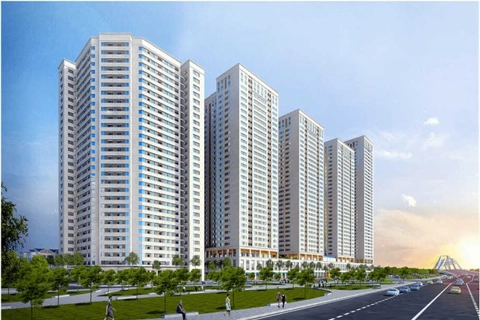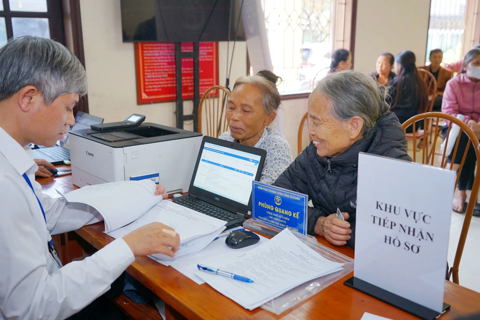Property
23 green and high-tech industrial zones to set up in Ho Chi Minh City
Nov 08, 2017 / 08:58 PM
Ho Chi Minh City plans to have 23 green and high-tech export processing zones (EPZs) and industrial zones (IZs) in an area of roughly 6,000 hectares by 2020.
The city’s EPZs and IZs will attract some US$6-8 billion of investment capital during 2016-2025.
The city now has 17 EPZs and IZs in operation with a total area of more than 2,570 hectares.
Nguyen Hoang Nang, Head of Ho Chi Minh City Export Processing and Industrial Zone Authority (Hepza), said that the city would transfer existing zones into green, clean and hi-tech ones by 2025 and developing new hi-tech zones for part-supplying industries.
Priority would be given to investments of existing investors into hi-tech development, 4.0 industry technologies and part-supplying industry which would generate high added value.
Despite rapid development since 1991 when the first EPZ – Tân Thuận – was founded, the planning of EPZs and IZs in Ho Chi Minh City has not been clarified without the establishment of the linkage and value chain among zones.
Expert Nguyen Van Kich said that Ho Chi Minh City used to lead the country in developing EPZs and IZs in a long time but now was losing its crown. He took the southern city of Binh Duong as an example. Binh Duong started developing EPZs and IZs later than Ho Chi Minh City but now it has 36 zones with a total area of more than 10,200 hectares.
In addition, most projects in Ho Chi Minh City’s EPZs and IZs were of small scale and few, just about 10 per cent, had advanced technologies.
EPZs and IZs in the southern city had not also established a close linkage between firms and part-supplying industry.
In addition, the infrastructure, especially the transport and water supply and drainage systems, were heavily overloaded.
All these problems required EPZs and IZs in Ho Chi Minh City to renovate their strategies to keep and attract investors.
Experts said that EPZs and IZs needed to enhance linkage with others in the city as well as with other zones in the southern region.
Duong Minh Tam, Hepza’s Deputy Head, said that besides attracting foreign direct investments, EPZs and IZs needed to have mechanisms to encourage investments of domestic companies in part-supplying industry.
While the city’s empty land was exhausting, it was critical to improve the efficiency of land use to lower land leases, Tam said.
Besides, experts said that to attract large-scale and hi-tech investments, the city needed to prepare the human resources with knowledge and skills meeting investors’ demand.
The city also needed to hasten the administrative reform, improving the transport infrastructure system and logistics services.
The city now has 17 EPZs and IZs in operation with a total area of more than 2,570 hectares.
Nguyen Hoang Nang, Head of Ho Chi Minh City Export Processing and Industrial Zone Authority (Hepza), said that the city would transfer existing zones into green, clean and hi-tech ones by 2025 and developing new hi-tech zones for part-supplying industries.
Priority would be given to investments of existing investors into hi-tech development, 4.0 industry technologies and part-supplying industry which would generate high added value.
Despite rapid development since 1991 when the first EPZ – Tân Thuận – was founded, the planning of EPZs and IZs in Ho Chi Minh City has not been clarified without the establishment of the linkage and value chain among zones.

Tan Thuan is the first export processing zone in Ho Chi Minh City.
|
In addition, most projects in Ho Chi Minh City’s EPZs and IZs were of small scale and few, just about 10 per cent, had advanced technologies.
EPZs and IZs in the southern city had not also established a close linkage between firms and part-supplying industry.
In addition, the infrastructure, especially the transport and water supply and drainage systems, were heavily overloaded.
All these problems required EPZs and IZs in Ho Chi Minh City to renovate their strategies to keep and attract investors.
Experts said that EPZs and IZs needed to enhance linkage with others in the city as well as with other zones in the southern region.
Duong Minh Tam, Hepza’s Deputy Head, said that besides attracting foreign direct investments, EPZs and IZs needed to have mechanisms to encourage investments of domestic companies in part-supplying industry.
While the city’s empty land was exhausting, it was critical to improve the efficiency of land use to lower land leases, Tam said.
Besides, experts said that to attract large-scale and hi-tech investments, the city needed to prepare the human resources with knowledge and skills meeting investors’ demand.
The city also needed to hasten the administrative reform, improving the transport infrastructure system and logistics services.








